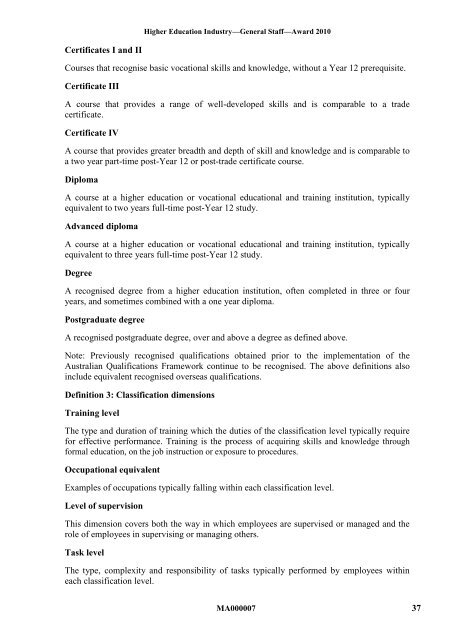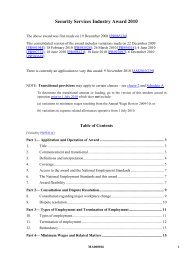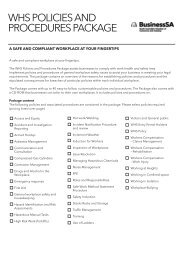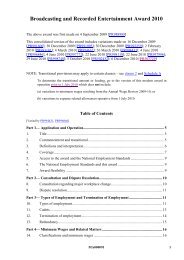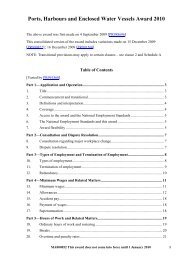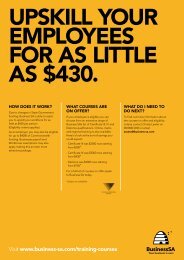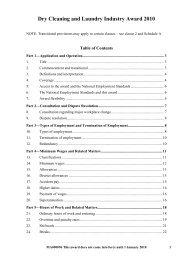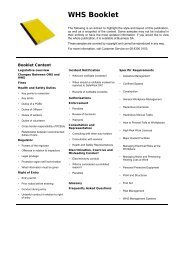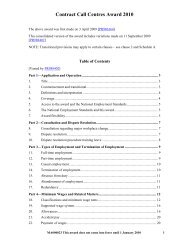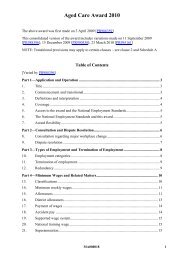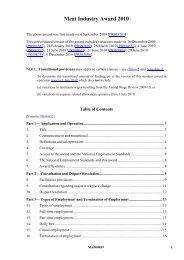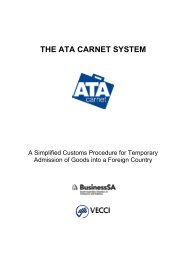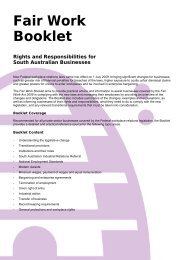Higher Education Industry-General Staff-Award 2010 - Business SA
Higher Education Industry-General Staff-Award 2010 - Business SA
Higher Education Industry-General Staff-Award 2010 - Business SA
Create successful ePaper yourself
Turn your PDF publications into a flip-book with our unique Google optimized e-Paper software.
<strong>Higher</strong> <strong>Education</strong> <strong>Industry</strong>—<strong>General</strong> <strong>Staff</strong>—<strong>Award</strong> <strong>2010</strong>Certificates I and IICourses that recognise basic vocational skills and knowledge, without a Year 12 prerequisite.Certificate IIIA course that provides a range of well-developed skills and is comparable to a tradecertificate.Certificate IVA course that provides greater breadth and depth of skill and knowledge and is comparable toa two year part-time post-Year 12 or post-trade certificate course.DiplomaA course at a higher education or vocational educational and training institution, typicallyequivalent to two years full-time post-Year 12 study.Advanced diplomaA course at a higher education or vocational educational and training institution, typicallyequivalent to three years full-time post-Year 12 study.DegreeA recognised degree from a higher education institution, often completed in three or fouryears, and sometimes combined with a one year diploma.Postgraduate degreeA recognised postgraduate degree, over and above a degree as defined above.Note: Previously recognised qualifications obtained prior to the implementation of theAustralian Qualifications Framework continue to be recognised. The above definitions alsoinclude equivalent recognised overseas qualifications.Definition 3: Classification dimensionsTraining levelThe type and duration of training which the duties of the classification level typically requirefor effective performance. Training is the process of acquiring skills and knowledge throughformal education, on the job instruction or exposure to procedures.Occupational equivalentExamples of occupations typically falling within each classification level.Level of supervisionThis dimension covers both the way in which employees are supervised or managed and therole of employees in supervising or managing others.Task levelThe type, complexity and responsibility of tasks typically performed by employees withineach classification level.MA000007 37


